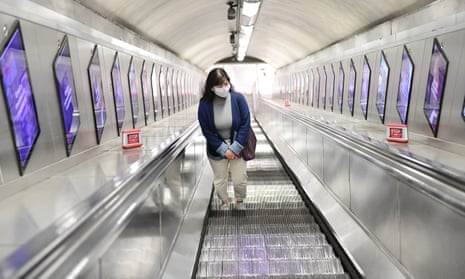The coronavirus established itself early on in Italy where reported deaths are now in excess of those recorded in China.
But is the crisis witnessed in Italy about to play out in the UK? And when are lockdowns and other interventions likely to start to make a difference?
Though there are some similarities – the picture is complex
Number of victims
The death toll in Britain is roughly two weeks behind that of Italy, according to researchers who have analysed the data.
In week 10 of this year, ending 6 March, Italy announced 176 new Covid-19 deaths, comparable to the 166 deaths the UK reported in week 12.
If the spread of the pandemic in the UK tracks Italy’s closely, the domestic death toll could soon rise sharply.
Italian authorities recorded 1,066 new Covid-19 deaths in week 11, the equivalent of this week in the UK’s outbreak.
“It looks as though we are two weeks behind Italy in number of Covid-19 deaths,” said Prof Sheila Bird, formerly of the MRC’s Biostatistics Unit at Cambridge University.
“But all this means is that we have comparable population sizes and had a comparable number of deaths in week 12 as Italy had in week 10. We may be on a less steep trajectory than Italy, but it’s too early to know yet.”
On Monday, a new analysis of data from both countries showed that deaths may indeed be rising marginally more slowly in Britain than they did in Italy. Prof David Spiegelhalter, at Cambridge University’s Statistical Laboratory, looked at the numbers of deaths reported in the 14 days since the fifth fatality in each country. The figures suggest that UK Covid-19 deaths have risen on average about 30% per day, versus 37% during the equivalent period of Italy’s epidemic.
Spiegelhalter stressed that the outlook was “all very uncertain at the moment” not least because the two populations and their nations’ responses to the outbreak differ so much. There was “some reason for hope,” he said of the UK situation, “although we will must be ready for having hundreds of deaths a day.”
Has Italy reached its peak – and what about the UK?
The same analysis hints that Italy may be approaching a peak in its epidemic, but the answer will only be clear if the country continues to report falling numbers of new deaths over the coming days and weeks.
The UK’s peak may not be so severe if the UK’s response to the outbreak has been effective, Spiegelhalter said, but the answer to that is not yet clear.
Compared with Britain, Italy had less time to prepare, the virus may have been circulating more widely before it was detected, and the country has more older people who are more tightly connected to family and friends.
However, comparisons present problems, as it’s not possible to truly compare like-with-like.
One factor that will have a substantial impact on deaths is the capacity for hospitals to care for the most seriously ill patients, and this differs markedly from country to country. “When you hit the capacity of intensive care beds then you might get an additional shift up which could reset the rate of increase thereafter,” said Bird.
Different demographics – and testing
One reason for Italy’s high death rate could be the country’s demographics – 23% of its population are aged 65 and over. The UK is younger on average – with 18% of its population in this age category. Covid-19 is more dangerous for older people.
Testing and the number of confirmed cases is also an issue.
Differences in testing policy, for example, will account for some of the variations in mortality rates as testing more patients will increase the number of confirmed cases, and is likely to reduce the overall mortality rate. Data on patient characteristics such as age and underlying health conditions is another factor we don’t know about.
Germany, where 21% of the population are over 65, appears to have one of the world’s lowest death rates. The country has reported just 94 deaths from 24,873 cases, according to data from Johns Hopkins University. The reasons for this are not yet clear, but they could include differences in data gathering or its high testing rate.
As Adam Kucharski, who is modelling the outbreak at the London School of Hygiene and Tropical Medicine, points out, deaths reported today do not reflect the state of the epidemic at the moment.
Those who die are typically infected about four weeks earlier. “Strictly speaking we should say something like: transmission in the UK four weeks ago was where Italy was about six weeks ago,” he said.
The lockdown effect
For the same reason, the impact of the cascade of lockdowns across Italy, and ever more stringent restrictions on movement brought in across the UK, will take time to show up in the daily death tolls. A wave of Italians fled to the country’s south when news leaked on 8 March that the government intended to quarantine 16 million people in the high-risk north. If those people carried the infection with them, the deaths that result are not likely to show up until at least the start of next week.
In the UK, where pubs, clubs, restaurants and theatres shuttered only days ago, and school closures began this week, any resulting impact on deaths will not be apparent until mid-April soonest. “It’s quite likely to be at least three weeks before we see a slow down in the deaths. And they will potentially still be increasing. It depends how much social distancing we’ve managed to achieve,” said Bird.
